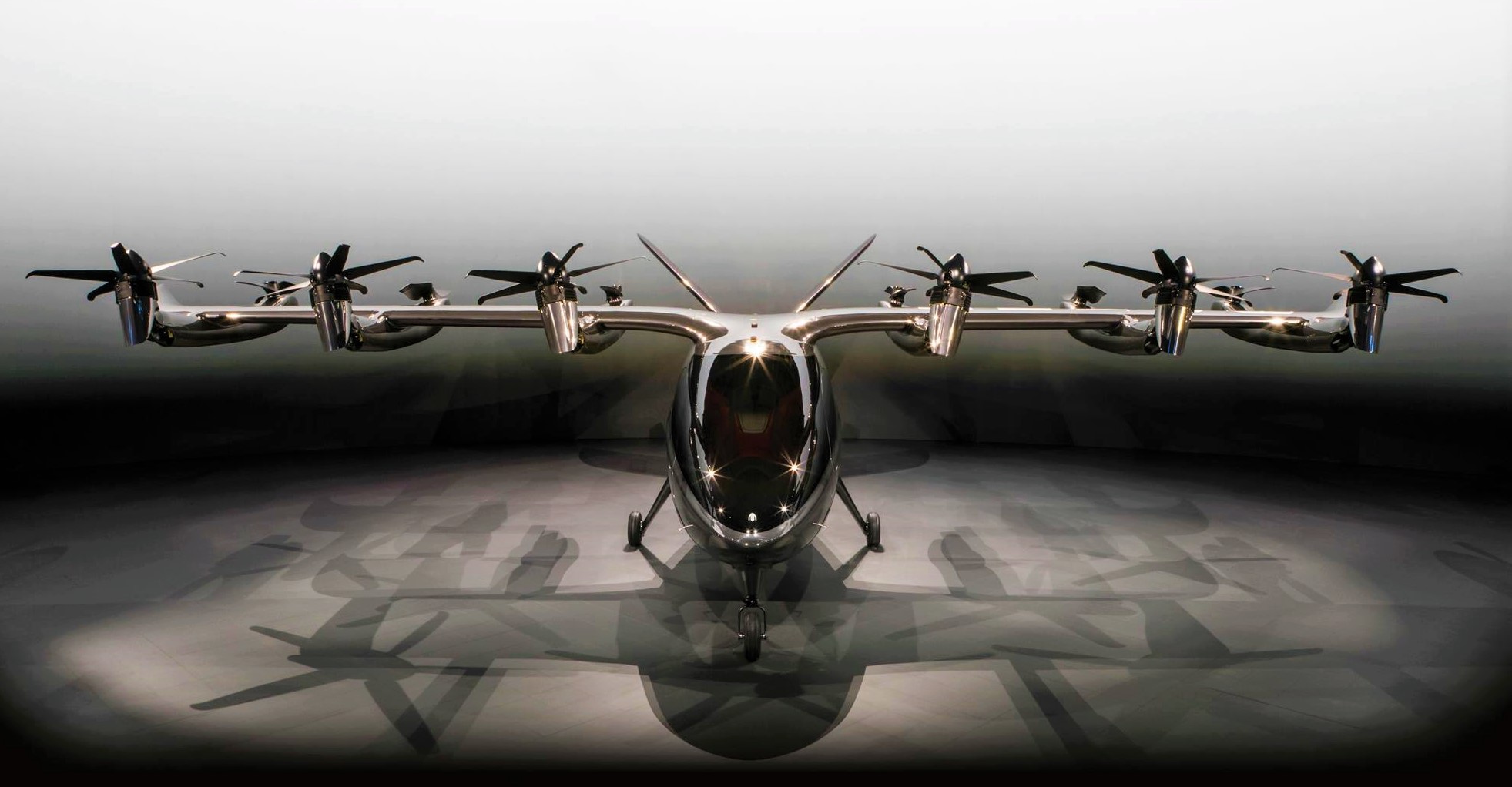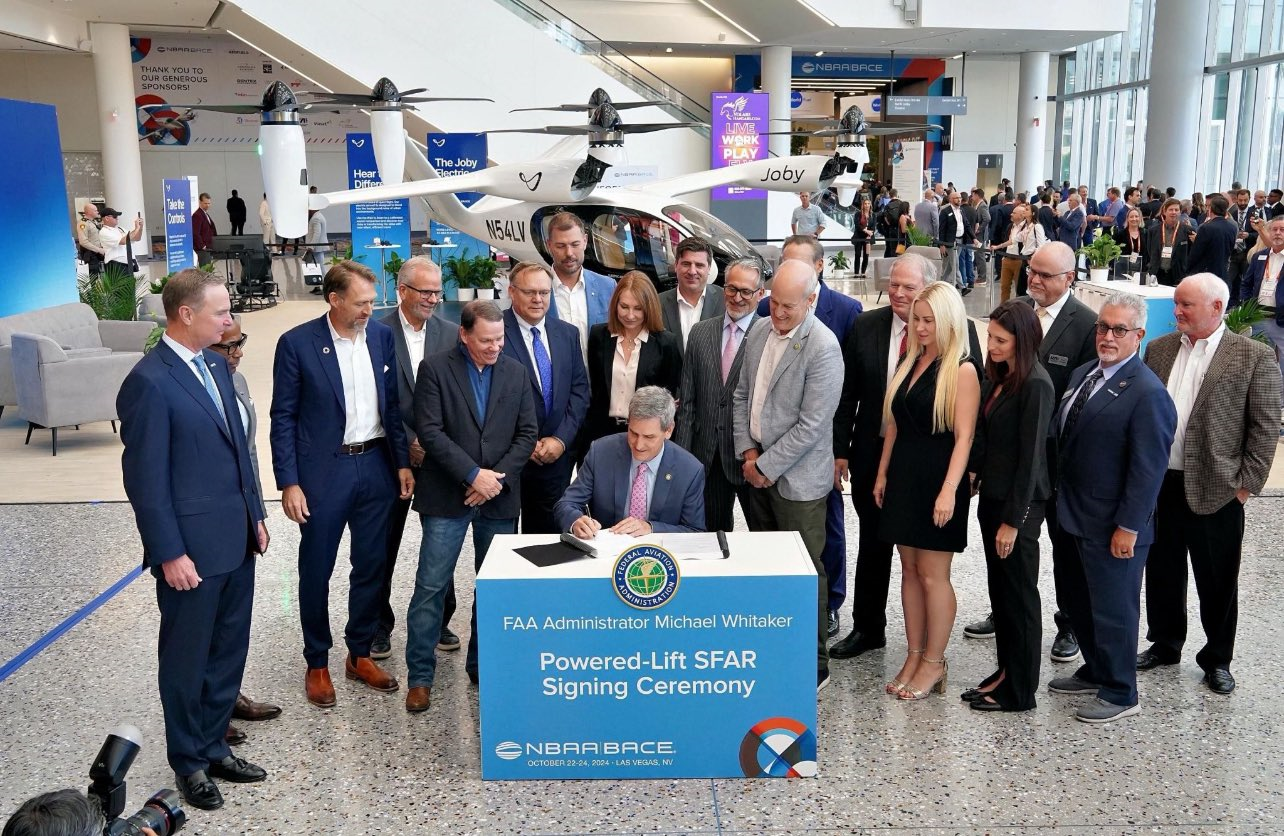


The Federal Aviation Administration (FAA) has issued a final rule for the qualifications, training, and operational requirements for pilots and instructors flying powered-lift aircraft, which combine characteristics of airplanes and helicopters.
This rule is a key step toward advanced air mobility (AAM) operations, which include air taxis and cargo delivery, becoming a reality in the US National Airspace System.
The announcement was made in Las Vegas at the National Business Aviation Association Business Aviation Convention & Exhibition (NBAA-BACE), a civil aviation trade show. FAA Release read,
"The Federal Aviation Administration (FAA) is ready for powered lift, which will be the first completely new category of civil aircraft since helicopters were introduced in the 1940s. Powered lift operations include air taxis, cargo delivery and a variety of operations within urban and rural areas. "
Powered-lift vehicles have characteristics of both airplanes and helicopters, taking off vertically but then flying at high speeds. Given the arrival of air taxi demonstrations and test flights in some cities, the FAA is evidently preparing for their widespread usage.
For the futuristic Urban Air Mobility (UAM), the Low-altitude urban aircraft known as eVTOLs have drawn intense global interest, with numerous companies going public like Joby Aviation and Archer Aviation.
In a press release, the FAA referred to the new rule as the final piece of the puzzle for safely introducing these aircraft in the near term.The FAA also stated that the rule allows for pilots to train in powered-lift with a single set of flight controls.
"The rule also addresses their operational requirements, including minimum safe altitudes and required visibility."
"The rule is the final piece in the puzzle for safely introducing these aircraft in the near term."
"The opportunities for the use of powered lift operations are far reaching, from transporting passengers in urban areas and short-haul operations such as air ambulance services and cargo operations to potentially serving smaller communities over time. "

The 2024 FAA Reauthorization Act, signed into law in May 2024, included a mandate for the agency to prepare for the safe and efficient introduction of electric and hydrogen-electric aircraft into the National Airspace System, in part by finalizing the SFAR.
“This is a new operating rule that introduces an entirely new category of aircraft,” Whitaker said. “Prior to this, we had fixed-wing aircraft and roto-craft, and we now have a third category for powered-lift."
"This rule creates the operation system for advanced air mobility. It allows operating rules and training rules to take effect for these new aircraft.”
Airlines and other UAM startups are looking at developing transport services using battery-powered aircraft that can take off and land vertically to ferry travelers to airports or for short city trips, allowing them to beat traffic.
The corresponding release from FAA, the new rule could alter a few key things:
“The opportunities for the use of powered lift operations are far-reaching, from transporting passengers in urban areas and short-haul operations such as air ambulance services and cargo operations to potentially serving smaller communities over time,” the FAA said.
This final rule adopts permanent amendments and a Special Federal Aviation Regulation (SFAR) for a period of ten years to: facilitate the certification of powered-lift pilots, clarify operating rules applicable to operations involving a powered-lift, and finalize other amendments which are necessary to integrate powered-lift into the National Airspace System (NAS).
The new rule was applauded by those in the industry, including JoeBen Bevirt, founder and CEO of air taxi company Joby Aviation, He said,
"The regulation published today will ensure the U.S. continues to play a global leadership role in the development and adoption of clean flight,” “Delivering ahead of schedule is a testament to the dedication, coordination and hard work of the rulemaking team.”
The FAA said the rule allows pilots to train with a single set of flight controls while prior rules required two flight controls – for the student and instructor.
Former acting FAA Administrator Billy Nolen, who is chief safety officer at Archer, said the announcement is a big milestone for the deployment of flying air taxis.
Leading carrier Delta Air Lines has already invested $60 million in Joby Aviation in a partnership aiming to offer passengers air taxi transport to and from airports in New York and Los Angeles in future. Recenly, Toyota also invested $500 million in Joby.
United Airlines is backing California-based company, Archer Aviation, with an order for 200 aircraft that Archer said could be worth $1 billion with an option for $500 million more.
Display Picture : Archer Aviation
Related Article......
